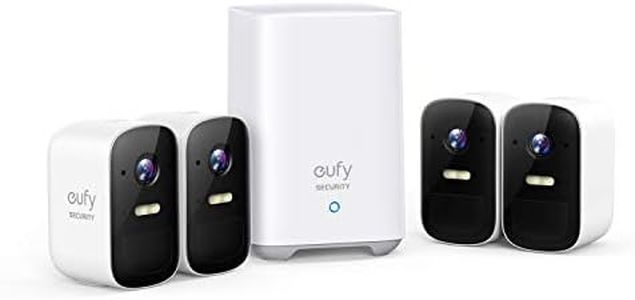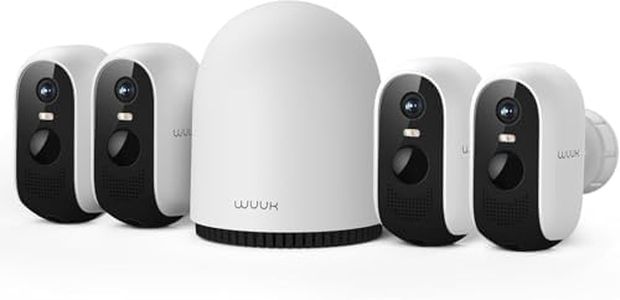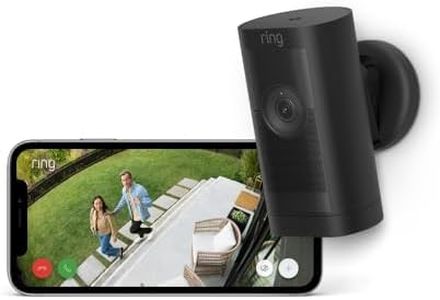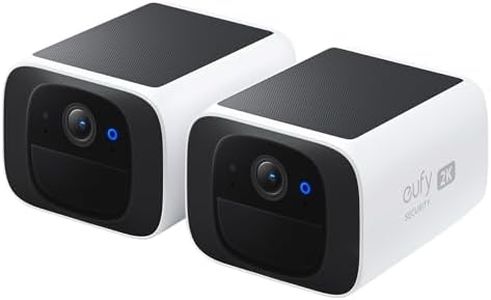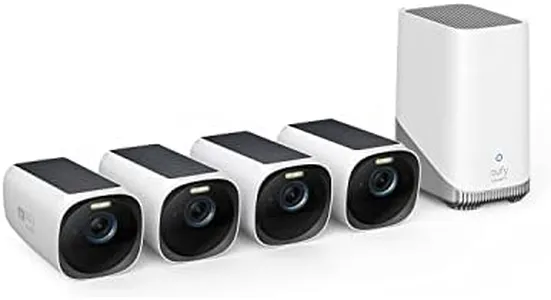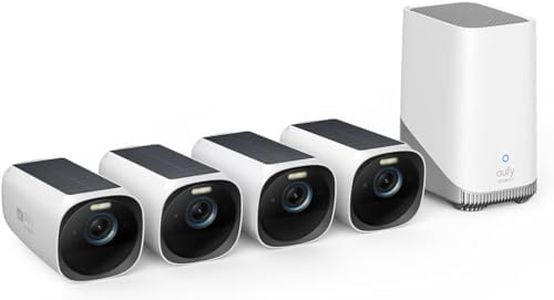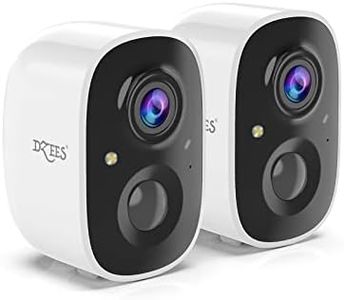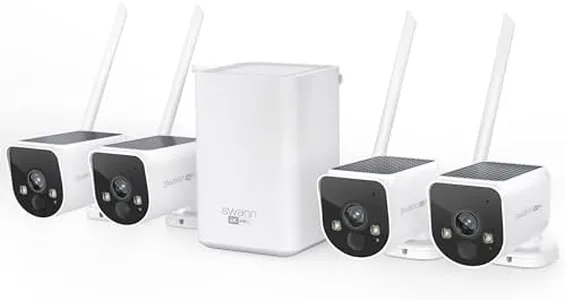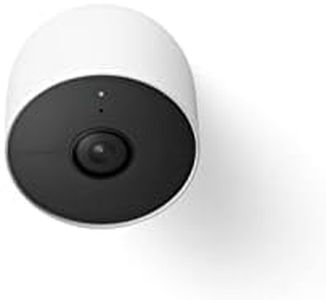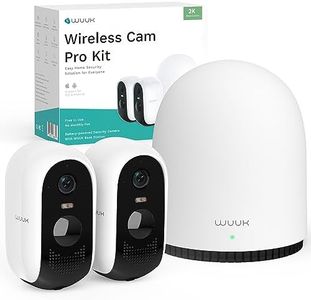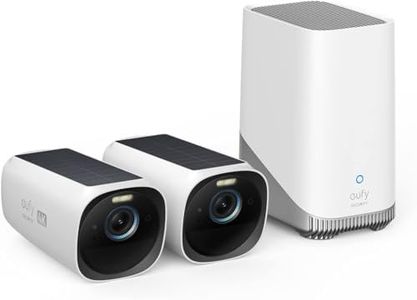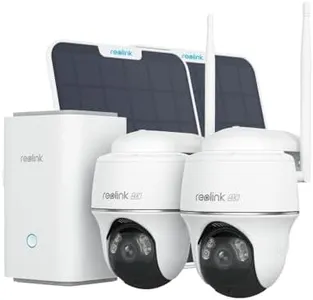We Use CookiesWe use cookies to enhance the security, performance,
functionality and for analytical and promotional activities. By continuing to browse this site you
are agreeing to our privacy policy
10 Best Wireless Security Systems
From leading brands and best sellers available on the web.Buying Guide for the Best Wireless Security Systems
Choosing the right wireless security system can be a big step towards keeping your home or business safe. To make the best choice, it's important to understand the different features that these systems offer, and to think about your own security needs. By learning about the main specifications and what they mean, you can find a system that matches your space, lifestyle, and level of protection you want.Connectivity RangeConnectivity range tells you how far the devices such as cameras, sensors, and the control hub can be from each other while still reliably communicating. This is important because if your home or business is large, or if you plan to put cameras outside, you'll need a system that can maintain a strong connection over greater distances or through obstacles like walls and doors. Short-range systems are suitable for small apartments, average-range for typical homes, and long-range for large properties. To pick the right range, consider the size of the area you want to cover and any potential sources of interference in your building.
Number and Type of ComponentsThis specification describes how many sensors, cameras, and alarms are included, and what types they are (such as motion sensors, glass-break detectors, or window contacts). The right system for you should have enough devices to cover all entry points and sensitive areas. If you just want basic security, a few door and window sensors may be enough. For more complete monitoring, look for systems with more sensors and additional types like indoor and outdoor cameras or smart locks. Assess which areas you need to protect most and choose a package that fits your needs.
Power Source and Battery LifeWireless security systems usually rely on batteries to keep them running without wires. The battery life tells you how often you'll need to recharge or replace them. Longer battery life means less maintenance, which can be especially important if devices are placed in hard-to-reach spots. Some systems also offer backup power features in case of a power outage. Choose a system with battery life that matches how often you're willing to check and maintain your devices, and consider backup options if you want extra reliability.
Mobile App and Remote AccessMost modern systems allow you to control and monitor your security from your phone or tablet through a mobile app. The quality and features of the app can vary, with some offering live video streaming, instant alerts, and easy system management. A simpler app may be easier for beginners, while advanced apps might provide more control and detailed notifications. Think about how much you want to interact with your security system remotely and choose one with an app that meets your comfort and usability needs.
Monitoring OptionsMonitoring refers to how you are alerted when something happens. Some systems are self-monitored, sending alerts directly to your phone, while others offer professional monitoring where a security company will notify you and emergency services. If you prefer handling things yourself or want to avoid ongoing commitments, choose self-monitoring. If you want an extra layer of security and don't want to worry about missing alerts, professional monitoring might be a better fit. Consider how much responsibility you want to take and how often you are available to respond to alerts.
Integration with Smart Home DevicesMany wireless security systems can connect and work with other smart devices like voice assistants, smart locks, or lights. This integration can add convenience and allow you to control everything from one place. If you already use smart devices, make sure the security system is compatible with them. If you don't use any now but might in the future, choosing a system that offers room for integration can be helpful as your needs grow.
Installation DifficultySome wireless systems are designed for easy self-installation with simple instructions and minimal tools, while others may take more time or skill to set up. If you value convenience or want to avoid extra costs, opt for an easy-install system. If you have specific layout needs or a more complex property, you might prefer a system that can be handled by professionals. Consider your comfort with DIY projects and choose a system in line with your willingness and ability to install it yourself.
